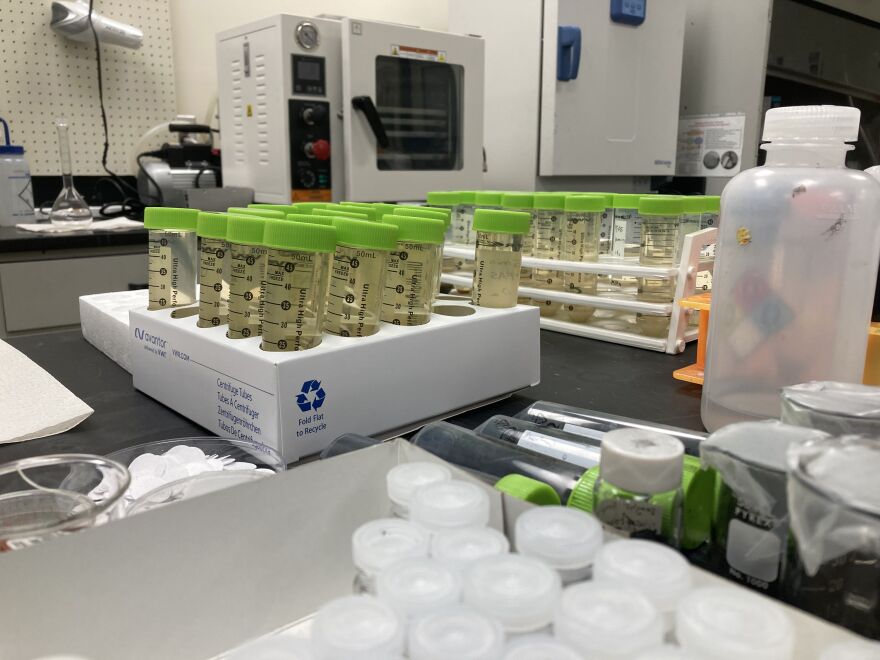Plasma may seem like a tool of science fiction. But at a lab at Michigan State University, researchers are using the fourth state of matter to destroy PFAS.
PFAS are a group of man-made chemicals that make stain-resistant, grease-resistant, and water-resistant products. They’re also toxic to human health. But the same qualities that have made them useful in manufacturing, also make them incredibly difficult to destroy.
Qui Hua Fan is a physics professor at MSU. His four-person team is experimenting with zapping PFAS-contaminated water with plasma.
Fan said he has a lot of faith in plasma. It’s relatively low cost, and can easily get to 54,000 degrees Fahrenheit - which is hot enough to break the strong bonds in PFAS compounds.
The current challenge is scaling up from using plasma in a lab on a single gallon of water - to an industrial operation like a wastewater treatment plant or landfill.
“Our strategy is to actually start from a relatively small scale, let's say one gallon, and then go up to 20 gallons and then 100 gallons,” Fan said.

Fan has looked at different applications of plasma for most of his career. But directing it at PFAS is a new move for him, prompted by a growing need for PFAS-destruction technology.
“It's a huge systematic problem,” Fan said. “We have to have a systematic team to handle this. That's exactly what we are trying to do.”
Right now, there are really only two methods of cleaning up PFAS. One is to excavate or filter the chemicals and send them to a landfill. The other is to use activated carbon, which acts like a filter.
Chemicals like PFAS stick to the porous surface of carbon. Then, in a process called “reactivation,” carbon is placed in a furnace, where high heat destroys PFAS attached to the carbon. The “reactivated” carbon can be used again.
Even though activated carbon is a tried and true method, remediation technology is still trying to find different and effective ways to destroy PFAS.
Guy Rousseau is a senior environmental manager with Michigan Consulting and Environmental. He says there are lots of opportunities to fine-tune existing processes or create new technologies.
“If I wasn't so busy, I'd be trying to find ways to break it apart because whoever invents it's going to be an instant millionaire, and it's going to be in very very high demand,” Rousseau said.
Rousseau said the best “remedial strategy” is to stop releasing PFAS into the environment and instead find alternatives to the useful - albeit, toxic compounds.
“We're looking at the technologies, we're looking at how to clean it up, and I'm like well maybe we should shut the valve off first,” he said.

Back at MSU’s lab, Fan explained that his team’s research is still in its early stages - only a month in, actually - but they’re excited by the progress.
He said there’s no one single solution for PFAS, and science is going to need a variety of strategies to address these ubiquitous chemicals.
“Although I am very confident in this technology as a plasma treatment, I still believe there might be even easier ways, better technologies,” Fan said. “There will always be a way to get it done.”
PFAS remediation and destruction boils down to a few factors: cost, efficiency, and scalability. Researchers and environmental consultants said they’re confident in their ability to find solutions, it’s just a matter of checking all the boxes.
This story is part four of WCMU's series on Demystifying PFAS, where we explore what a future with forever chemicals may look like.


